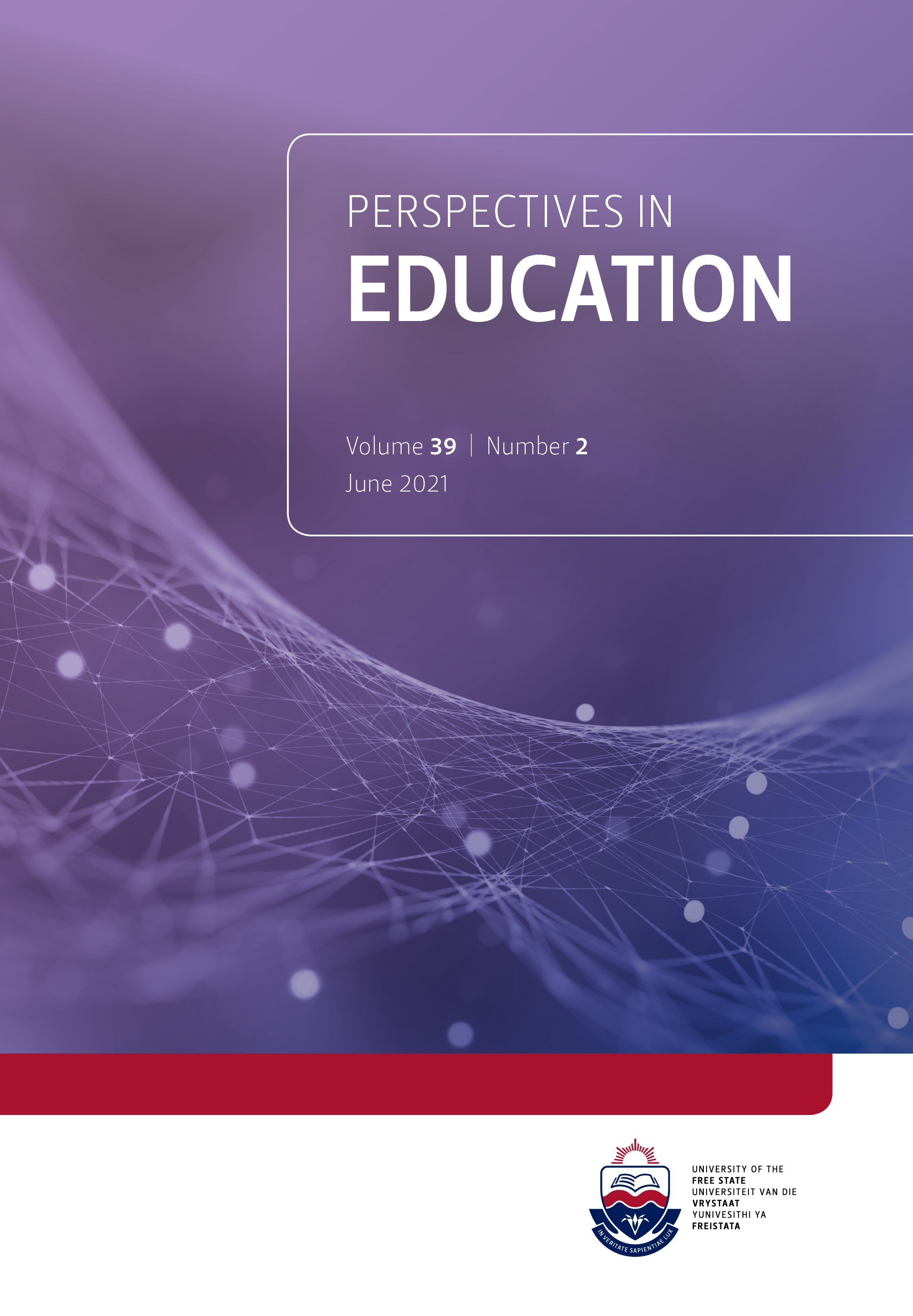Risk as productive in landscape architecture pedagogy
DOI:
https://doi.org/10.38140/pie.v39i2.4522Keywords:
Student resources, Risk, Landscape architecture, Diversity, Access, Multimodal pedagogies, Design educationAbstract
This paper explores the notion of “productive risk” as a way of understanding how diverse students can become re-makers of landscape architectural design practices and education. We trace the design trajectories of two first-year students at a South African tertiary institution and examine how the students negotiate the risk of drawing on their own experiences and resources in order to access conventionalised disciplinary practices. It is important to recognise students’ brought-along resources, but we also need to recognise the risk involved for the students and teachers in drawing on these resources. This risk needs to be seen in the light of a history of colonised education where diverse resources and experiences were often disregarded or devalued. We show how these students contextualise landscape architecture in terms of their own experiences and draw on their resources as prompts to space-making for the imagined users of their designs. We surface the risk in terms of students’ experiential resources as well as the use of unusual model-building materials and techniques. The high levels of engagement that these two students demonstrate in their design trajectories reveal the importance of making a connection between diverse contexts and the landscape architectural classroom. We argue that a pedagogy that embraces risk as productive can recognise and validate the rich knowledge, resources and experiences that students bring with them.
Downloads
References
Archer, A. 2014. Power, social justice and multimodal pedagogies. In C Jewitt (Ed.). The Routledge handbook of multimodal analysis, 2nd ed (pp.189–197). Abingdon: Routledge.
Archer, A. & Newfield, D. 2014. Challenges and opportunities of multimodal approaches to education in South Africa. In A. Archer & D. Newfield (Eds.). Multimodal approaches to research and pedagogy: Recognition, resources and access (pp.1–15). London: Routledge. https://doi.org/10.4324/9781315879475
Bezemer, J. & Kress, G. 2016. Multimodality, learning and communication: A social semiotic frame. Abingdon: Routledge. https://doi.org/10.4324/9781315687537
Dee, C. 2013. Form and fabric in landscape architecture: A visual introduction. Abingdon: Routledge.
Gomez, A., Puigvert, L. & Flecha, R. 2011. Critical communicative methodology: Informing real social transformation through research. Qualitative Inquiry, 17(3): 235–245. https://doi.org/10.1177/1077800410397802
Halliday, M.A.K. 1978. Language as social semiotic: The social interpretation of language and meaning. London: Edward Arnold.
Jaffer, F. & Garraway, J. 2016. Understanding gaps between student and staff perceptions of university study in South Africa: A case study. Journal of Student Affairs in Africa, 4(1): 65–76. https://doi/org/ 10.14426/jsaa.v4i1.145
Jewitt, C. 2014. Different approaches to multimodality. In C. Jewitt (Ed.). The Routledge handbook of multimodal analysis, 2nd ed (pp. 31–43). London: Routledge.
Harrop-Allin, S. 2011. Playing with Barbie: exploring South African township children’s games as resources for pedagogy. In L. Green (Ed.). Learning, teaching and musical identity: Voices across cultures (pp. 156–169). Bloomington: University of Indiana Press.
Kerfoot, C. & Hyltenstam, K. (Eds.) 2017. Introduction: Entanglement and orders of visibility. In Entangled discourses: South-North orders of visibility (pp. 1–15). London: Routledge. https://doi.org/10.4324/9781315640006-1
Kress, G. 2010. Multimodality: A social semiotic approach to contemporary communication. London: Routledge.
Mavers, D. 2007. Semiotic resourcefulness: A young child’s email exchange as design. Journal of Early Childhood Literacy, 7(2): 155–176. https://doi.org/10.1177/1468798407079285
Newfield, D. 2013. Kressian moments in South African classrooms: Multimodality, representation, and learning. In M. Böck & N. Pachler (Eds.). Multimodality and social semiosis: Communication, meaning-making, and learning in the work of Gunther Kress (pp. 141–149). New York: Routledge.
Pratt, M.L. 1999. Arts of the contact zone. In D. Bartholomae & A. Petrosky (Eds.). Ways of reading: An anthology for writers, 5th ed (pp. 582–596). Boston: Bedford/St Martin’s.
Price, C. 2020. Redesigning landscape architecture in higher education: A multimodal social semiotic approach. Doctoral thesis. University of Cape Town.
Ravelli, L.J. & McMurtrie, R.J. 2016. Multimodality in the built environment: Spatial discourse analysis. New York: Routledge. https://doi.org/10.4324/9781315880037
Saidi, F.E. & Nazier, F. 2011. Enhancing learner performance in design education for disadvantaged students: The case of diploma programmes in architecture and jewellery design and manufacture. In Conference Proceedings of the Sixth International DEFSA Conference, 183–191. Design Education Forum of Southern Africa.
Salaam, S. 2017. Recognition of learning: A social semiotic exploration of signs of learning in jewellery design pedagogy. Doctoral thesis. University of Cape Town.
Santos, B. de S. 2014. Epistemologies of the South: Justice against epistemicide. London: Routledge.
Simpson, Z.S. 2014. Resources, representation, and regulation in civil engineering drawing: An autoethnographic perspective. In A. Archer & D. Newfield (Eds.). Multimodal approaches to research and pedagogy: Recognition, resources and access (pp.41–55). New York: Routledge.
Stein, P. 2008. Multimodal pedagogies in diverse classrooms: Representations, rights and resources. London: Routledge. https://doi.org/10.4324/9780203935804
Swaffield, S.R. 2006. Theory and critique in landscape architecture. Journal of Landscape Architecture, 1(1): 22–29. https://doi.org/10.1080/18626033.2006.9723361
Thesen, L. 2014. Risk as productive: Working with dilemmas in the writing of research. In: L Thesen & L Cooper (Eds.). Risk in academic writing: Postgraduate students, their teachers and the making of knowledge. Bristol: Multilingual Matters, 1–24. https://doi.org/10.21832/9781783091065-004
Thesen, L. & Cooper, L. (Eds.) 2014. Risk in academic writing: Postgraduate students, their teachers and the making of knowledge. Bristol: Multilingual Matters. https://doi.org/10.21832/9781783091065
van Leeuwen, T. 2005. Introducing social semiotics. Abingdon: Routledge. https://doi.org/10.4324/9780203647028
Weiss, R. 2014. Multimodality and medicine. In A. Archer & D. Newfield (Eds.). Multimodal approaches to research and pedagogy: Recognition, resources and access (pp. 153–173). New York: Routledge.
##submission.downloads##
Published
How to Cite
Issue
Section
License
Copyright (c) 2021 Dr Christine Price, A/Prof Arlene Archer

This work is licensed under a Creative Commons Attribution 4.0 International License.





